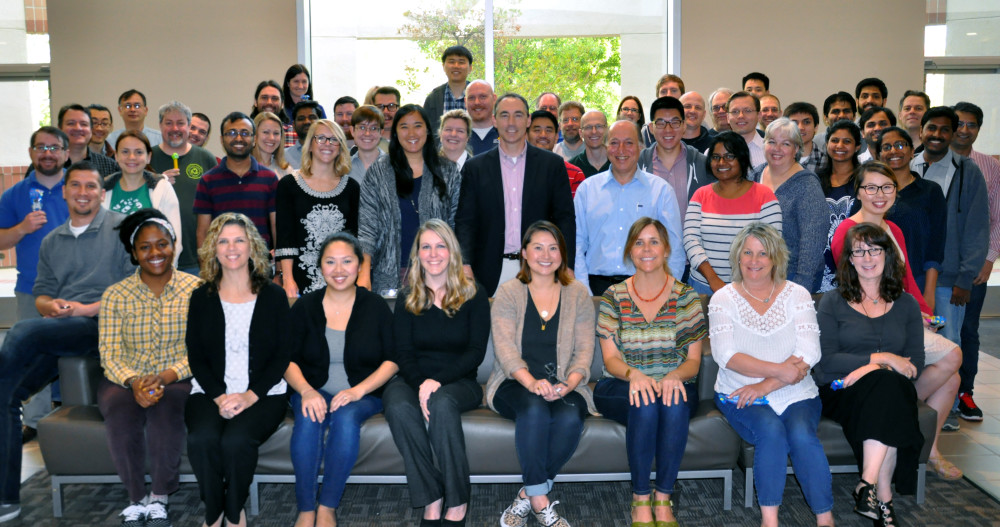A strategy to drive more synergy in IT across UC is to engage in more shared services. Initiatives like UCPath certainly will do that, but large programs are complicated and take several years to deploy. Grassroots efforts, meaning campus-led IT shared services, are another way to generate value across the system and elevate best practices quickly.
I visited Davis in April to celebrate the extension and renaming of one such group – UC Risk & Safety Solutions (UCRSS). Led by Executive Director Safa Hussain, this group grew from being a UC Davis specific entity to becoming a systemwide provider of services for environmental health and safety. They emphasize all the characteristics essential for value-creating IT teams – customer focus, entrepreneurship, and professional delivery.
I joined them to celebrate their new name and UC wide designation, and awarded every member of the team my new “badge” for IT Shared Services – a PEZ dispenser.
Display them proudly, UCRSS. They’re just a fun recognition of your accomplishments!
And now…to others across UC…tell me about an IT shared service on your campus. When I next visit, I would love to give you a collaboration badge too.








Here at UCB, we’ve been working to form what we’re calling the “bConnected Service Team,” of which I am a member. Until this team existed, we had instances of Google, Box, SharePoint, and Instructure Canvas on campus, all of which could be used to do collaborative work. They were all run independently, with little coordination among the teams running them. The purpose of the bConnected Service Team is to help coordinate among those 4 teams internally, and also to present all of the service offerings in a way that makes it easier for people on campus to understand the strengths and weaknesses of each tool, and which tool is best for which purpose. What makes this a little innovative is that none of the individual technology operations teams report to the bConnected Service Team. Rather, it’s all just about facilitating, coordinating, and collaborating among the still-existing operations teams.
We’re still largely getting started (we’re only about 10 months into the effort), but we’ve been getting some remarkably good feedback from the campus for the things we’ve done so far, such as a town hall, and a comparison matrix of the tools.
Ian-thank you for sharing the example
I love to hear about these type of activities. This looks like quite a challenge, and I would appreciate you keeping my informed as you progress and develop a successful working model for collaboration across the groups. Maybe then we could promote and find a way to expand the model to other locations
Tom